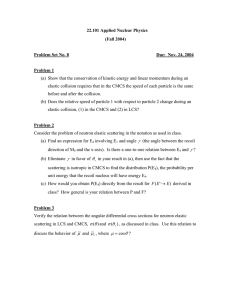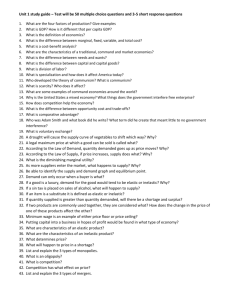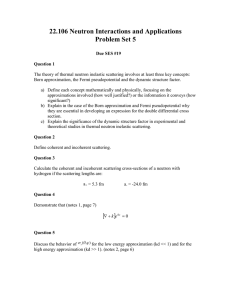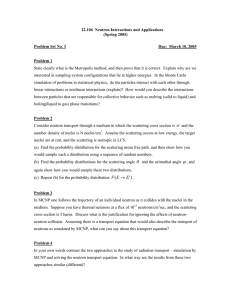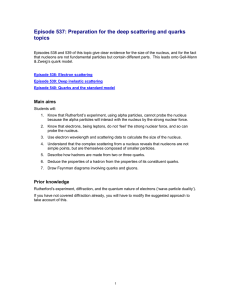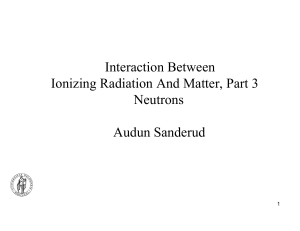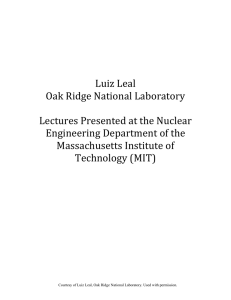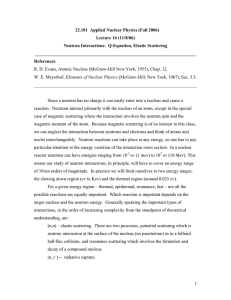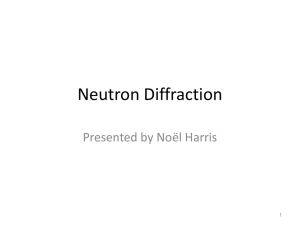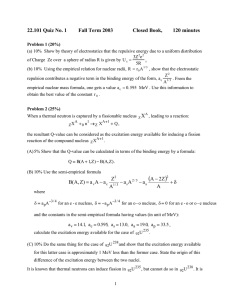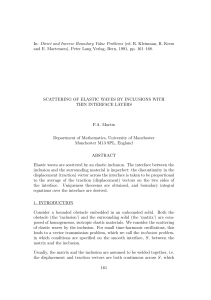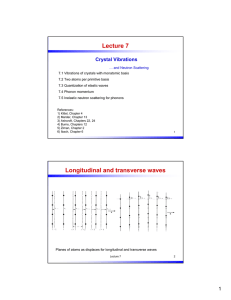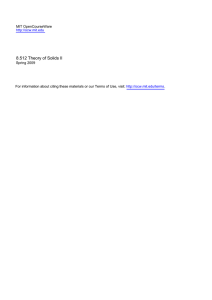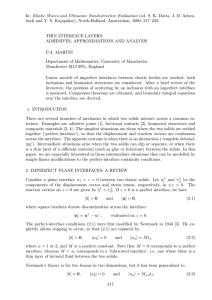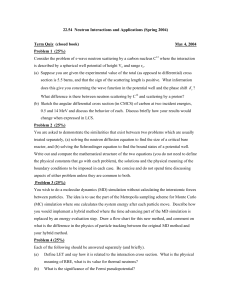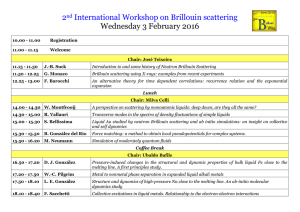22.106 Neutron Interactions and Applications (Spring 2005) Problem Set No. 2
advertisement
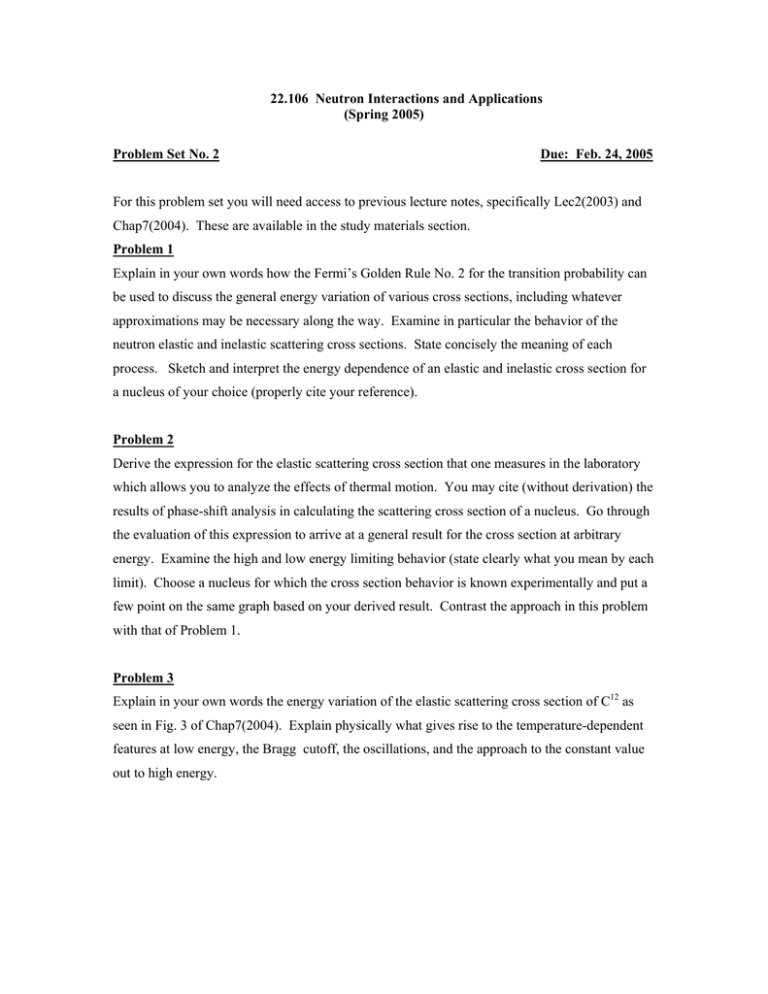
22.106 Neutron Interactions and Applications (Spring 2005) Problem Set No. 2 Due: Feb. 24, 2005 For this problem set you will need access to previous lecture notes, specifically Lec2(2003) and Chap7(2004). These are available in the study materials section. Problem 1 Explain in your own words how the Fermi’s Golden Rule No. 2 for the transition probability can be used to discuss the general energy variation of various cross sections, including whatever approximations may be necessary along the way. Examine in particular the behavior of the neutron elastic and inelastic scattering cross sections. State concisely the meaning of each process. Sketch and interpret the energy dependence of an elastic and inelastic cross section for a nucleus of your choice (properly cite your reference). Problem 2 Derive the expression for the elastic scattering cross section that one measures in the laboratory which allows you to analyze the effects of thermal motion. You may cite (without derivation) the results of phase-shift analysis in calculating the scattering cross section of a nucleus. Go through the evaluation of this expression to arrive at a general result for the cross section at arbitrary energy. Examine the high and low energy limiting behavior (state clearly what you mean by each limit). Choose a nucleus for which the cross section behavior is known experimentally and put a few point on the same graph based on your derived result. Contrast the approach in this problem with that of Problem 1. Problem 3 Explain in your own words the energy variation of the elastic scattering cross section of C12 as seen in Fig. 3 of Chap7(2004). Explain physically what gives rise to the temperature-dependent features at low energy, the Bragg cutoff, the oscillations, and the approach to the constant value out to high energy.


